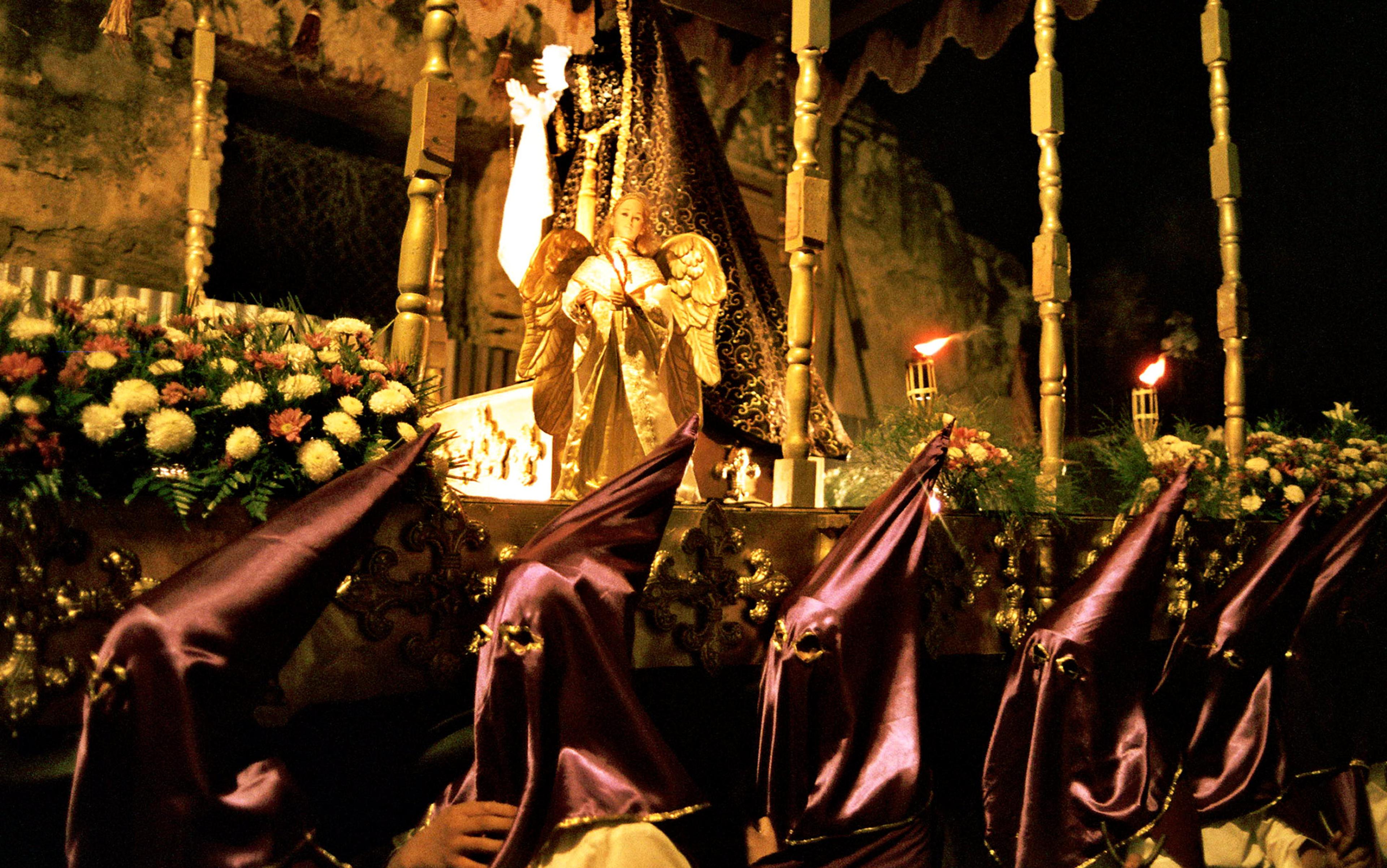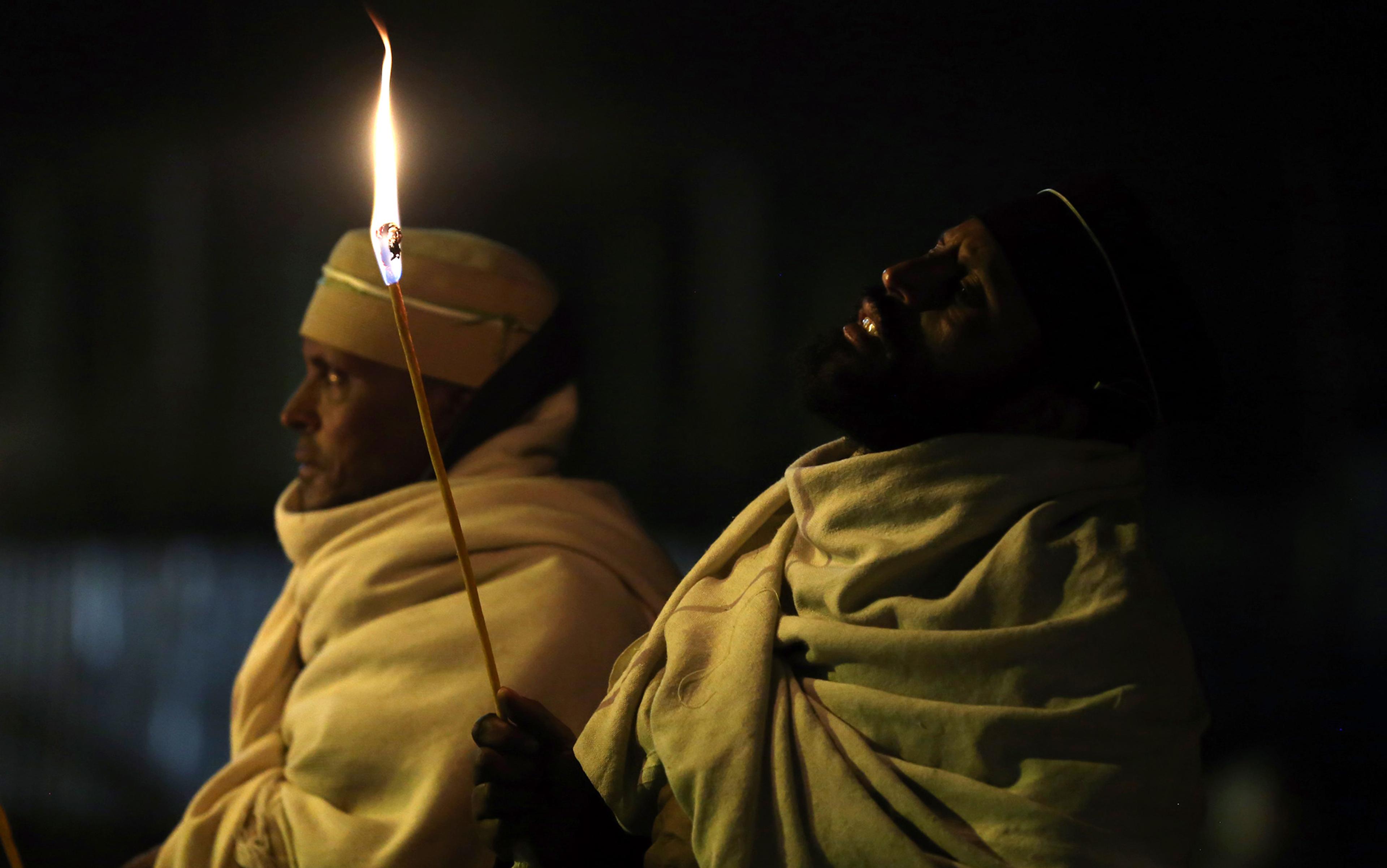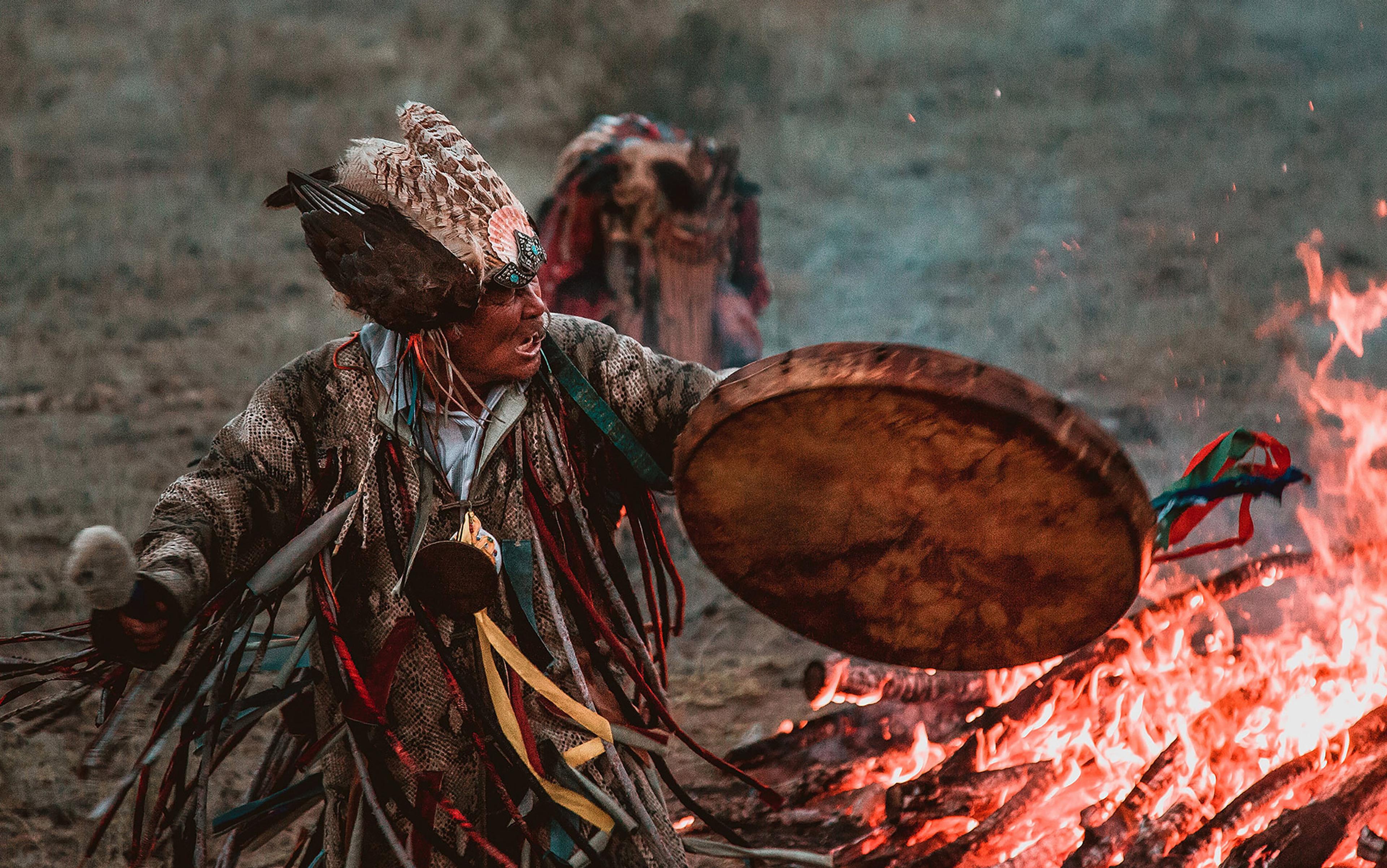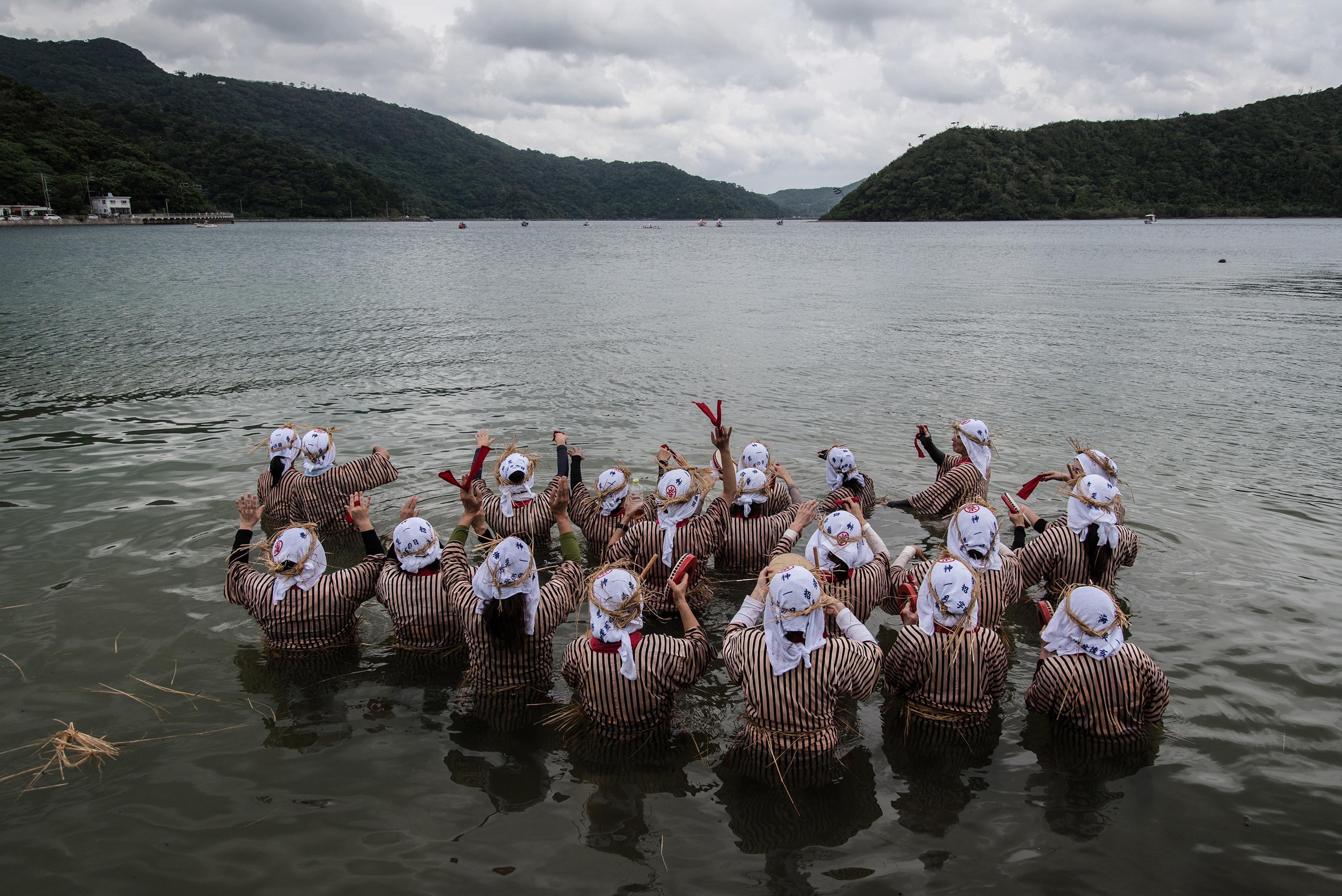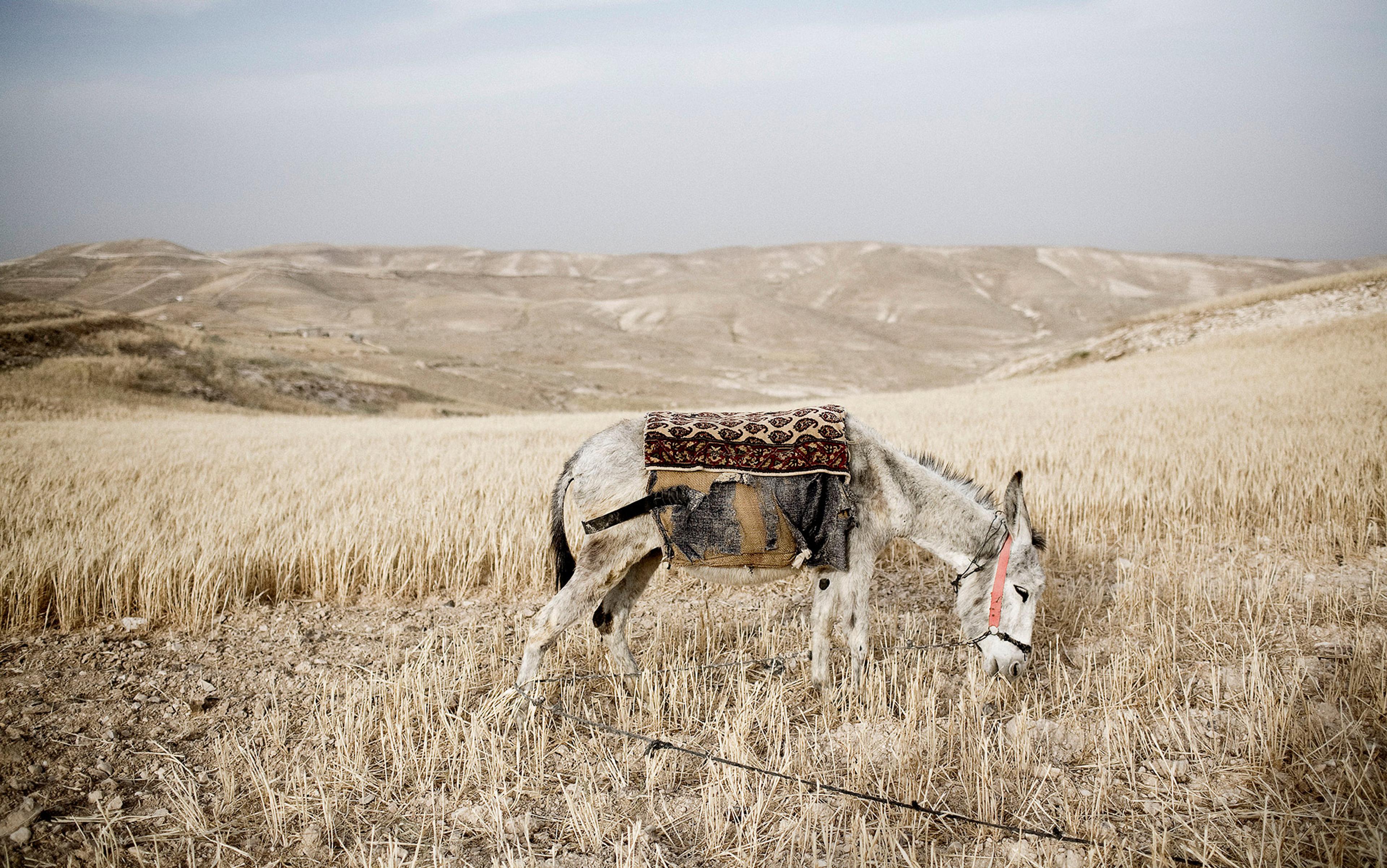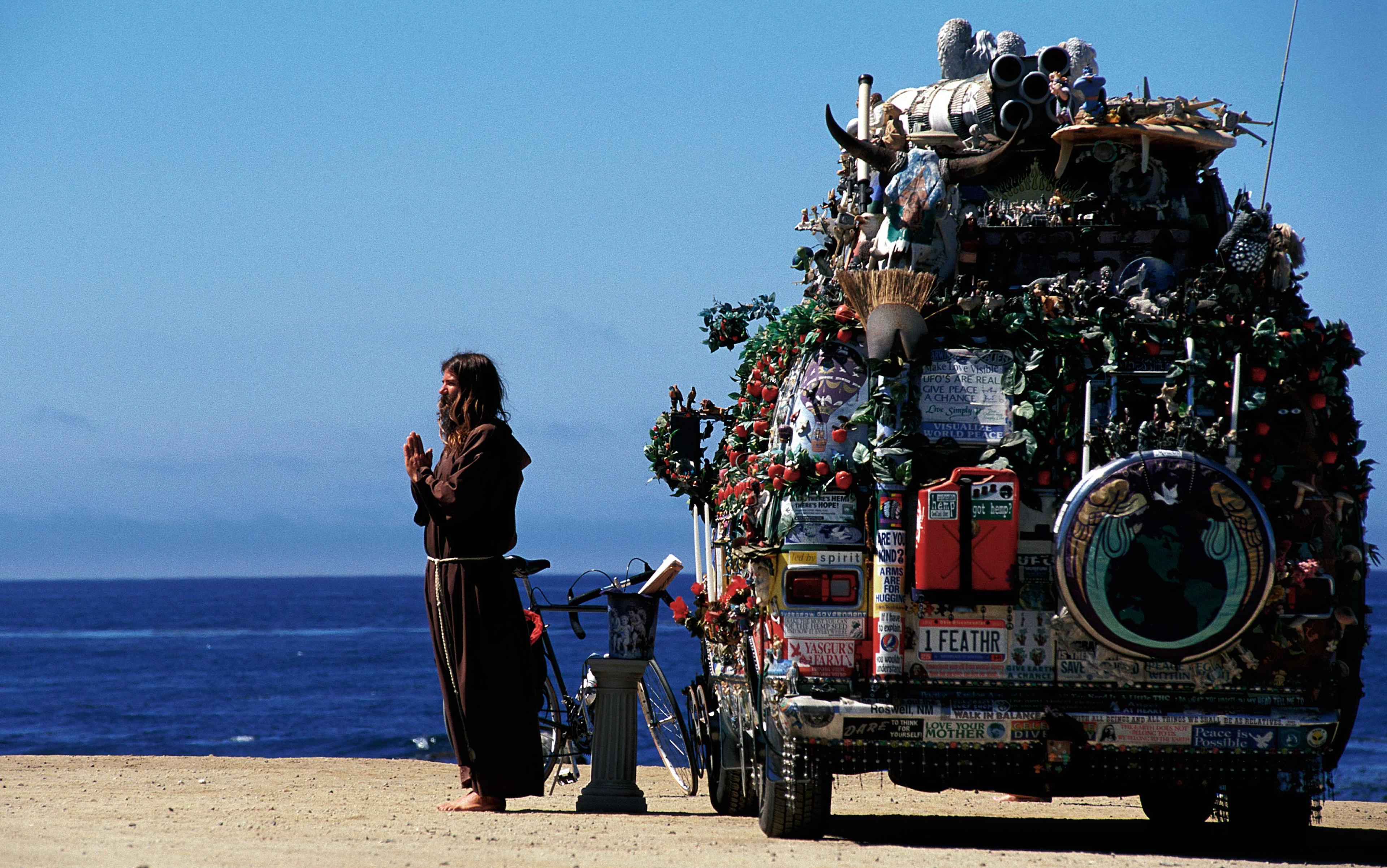Cults, generally speaking, are a lot like pornography: you know them when you see them. It would be hard to avoid the label on encountering (as I did, carrying out field work last year) 20 people toiling unpaid on a Christian farming compound in rural Wisconsin – people who venerated their leader as the closest thing to God’s representative on Earth. Of course, they argued vehemently that they were not a cult. Ditto for the 2,000-member church I visited outside Nashville, whose parishioners had been convinced by an ostensibly Christian diet programme to sell their houses and move to the ‘one square mile’ of the New Jerusalem promised by their charismatic church leader. Here they could eat – and live – in accordance with God and their leader’s commands. It’s easy enough, as an outsider, to say, instinctively: yes, this is a cult.
Less easy, though, is identifying why. Knee-jerk reactions make for poor sociology, and delineating what, exactly, makes a cult (as opposed to a ‘proper’ religious movement) often comes down to judgment calls based on perceived legitimacy. Prod that perception of legitimacy, however, and you find value judgments based on age, tradition or ‘respectability’ (that nice middle-class couple down the street, say, as opposed to Tom Cruise jumping up and down on a couch). At the same time, the markers of cultism as applied more theoretically – a single charismatic leader, an insular structure, seeming religious ecstasy, a financial burden on members – can also be applied to any number of new or burgeoning religious movements that we don’t call cults.
Often (just as with pornography), what we choose to see as a cult tells us as much about ourselves as about what we’re looking at.
Historically, our obsession with cults seems to thrive in periods of wider religious uncertainty, with ‘anti-cult’ activism in the United States peaking in the 1960s and ’70s, when the US religious landscape was growing more diverse, and the sway of traditional institutions of religious power was eroding. This period, dubbed by the economic historian Robert Fogel as the ‘Fourth Great Awakening’, saw interest in personal spiritual and religious practice spike alongside a decline in mainline Protestantism, giving rise to numerous new movements. Some of these were Christian in nature, for example the ‘Jesus Movement’; others were heavily influenced by the pop-cultural ubiquity of pseudo-Eastern and New Age thought: the International Society for Krishna Consciousness (aka the Hare Krishna), modern Wicca, Scientology. Plenty of these movements were associated with young people – especially young counter-cultural people with suspicious politics – adding a particular political tenor to the discourse surrounding them.
Against these there sprang a network of ‘anti-cult’ movements uniting former members of sects, their families and other objectors. Institutions such as the Cult Awareness Network (CAN) formed in 1978 after the poison fruit-drink (urban legend says Kool-Aid) suicides of Jim Jones and his Peoples Temple. The anti-cult networks believed that cults brainwashed their members (the idea of mind control, as scholars such as Margaret Singer point out, originated in media coverage of torture techniques supposedly used by North Korea during the Korean War). To counter brainwashing, activists controversially abducted and forcibly ‘deprogrammed’ members who’d fallen under a cult’s sway. CAN itself was co-founded by a professional deprogrammer, Ted Patrick, who later faced scrutiny for accepting $27,000 from the concerned parents of a woman involved in Leftist politics to, essentially, handcuff her to a bed for two weeks.
But that wasn’t all. An equal and no less fervent network of what became known as counter-cult activists emerged among Christians who opposed cults on theological grounds, and who were as worried about the state of adherent’s souls as of their psyches. The Baptist pastor Walter Ralston Martin was sufficiently disturbed by the proliferation of religious pluralism in the US to write The Kingdom of the Cults (1965), which delineated in detail the theologies of those religious movements Martin identified as toxic, and provided Biblical avenues for the enterprising mainstream Christian minister to oppose them. With more than half a million copies sold, it was one of the top-selling spiritual books of the era.
Writing the history of cults in the US, therefore, is also writing the history of a discourse of fear: of the unknown, of the decline in mainstream institutions, of change.
Every cultish upsurge – the Mansons, the Peoples Temple, the Sun Myung Moon’s Unification Church (or Moonies) – met with an equal and opposite wave of hysteria. In 1979, the US sociologists Anson D Shupe, J C Ventimiglia and David G Bromley coined the term ‘atrocity tale’ to describe lurid media narratives about the Moonies. Particularly gruesome anecdotes (often told by emotionally compromised former members) worked to place the entire religious movement beyond the bounds of cultural legitimacy and to justify extreme measures – from deprogramming to robust conservatorship laws – to prevent vulnerable people falling victim to the cultic peril. True or not, the ‘atrocity tale’ allowed anti-cult activists and families worried about their children’s wellbeing (or their suspicious politics) to replace sociological or legal arguments with emotional ones.
This terror peaked when atrocity tales began outnumbering genuine horrors. The ‘Satanic panic’ of the 1980s brought with it a wave of mass hysteria over cult Satanists ritually abusing children in daycare centres, something that seems entirely to have been the product of false memories. In the now-discredited bestselling book Michelle Remembers (1980) by the psychiatrist Lawrence Pazder and his patient Michelle Smith (later, Mrs Lawrence Pazder), the lead author relates how he unlocked Smith’s memories of Satanic childhood. This influential atrocity tale influenced the three-year case in the 1980s against an administrator of the McMartin Preschool in Los Angeles and her son, a teacher, that racked up 65 crimes. The prosecution spun a fear-stoking narrative around outlandish claims, including bloody animal mutilations. The number of convictions? Zero. But mass-media hysteria made Satanic panic a national crisis, and a pastime.
And yet it is impossible to dismiss anti-cult work as pure hysteria. There might not be Satanists lurking round every corner, lying in wait to kidnap children or sacrifice bunny rabbits to Satan, but the dangers of spiritual, emotional and sexual abuse in small-scale, unsupervised religious communities, particularly those isolated from the mainstream or dominant culture, is real enough.
It is also keenly contemporary. The de-centred quality of the US religious landscape, the proliferation of storefront churches and ‘home churches’, not to mention the potential of the internet, makes it easier than ever for groups to splinter and fragment without the oversight of a particular religious or spiritual tradition. And some groups are, without a doubt, toxic. I’ve been to compounds, home churches and private churches where children are taught to obey community leaders so unquestioningly that they have no contact with the outside world; where the death of some children as a result of corporal punishment has gone unacknowledged by church hierarchy; or where members have died because group leaders discouraged them from seeking medical treatment. I’ve spoken to people who have left some of these movements utterly broken – having lost jobs, savings, their sense of self, and even their children (powerful religious groups frequently use child custody battles to maintain a hold over members).
In one Reddit post, James Chatham, formerly a member of the Remnant Fellowship, a controversial church founded by the Christian diet guru Gwen Shamblin, listed every reason he’d been punished as a child:
Allow me to give you a short list of the super-crazy [discipline] I recieved [sic] ‘Gods loving discipline’ for.
Opening my eyes during a prayer
Joking with adults (That joked back with me) …
Saying that i don’t trust ‘Leaders’ (Their name for those that run the church)
Asking almost any question about the bible.
Trying to stop another kid from beating my skull in …
Sneezing …
Not being able to stand for 30 minutes straight with no break.
Asking if my mother loved me more than god.
Does such extreme disciplinarianism make the Remnant Fellowship a cult? Or does the question of labelling distract us from wider issues at hand?
We label cults ‘cults’ because they’re easy pickings, even if their beliefs are no more outlandish than reincarnation
The historian J Gordon Melton of Baylor University in Texas says that the word ‘cult’ is meaningless: it merely assumes a normative framework that legitimises some exertions of religious power – those associated with mainstream organisations – while condemning others. Groups that have approved, ‘orthodox’ beliefs are considered legitimate, while groups whose interpretation of a sacred text differs from established norms are delegitimised on that basis alone. Such definitions also depend on who is doing the defining. Plenty of ‘cults’ identified by anti-cult and counter-cult groups, particularly Christian counter-cult groups such as the EMNR (Evangelical Ministries to New Religions), are recognised elsewhere as ‘legitimate’ religions: Jehovah’s Witnesses, the Church of Jesus Christ of Latter-Day Saints, even the Catholic Church have all come under fire, alongside the Moonies or the Peoples Temple.
To deny a so-called ‘cult’ legitimacy based on its size, or beliefs, or on atrocity tales alone is, for Melton, to play straight into normative definitions of power. We label cults ‘cults’ because they’re easy pickings, in a sense; even if their beliefs are no more outlandish, in theory, than reincarnation or the transubstantiation of the wafer in the Catholic Eucharist.
In a paper delivered at the Center for Study of New Religions in Pennsylvania in 1999, Melton said: ‘we have reached a general consensus that New Religions are genuine and valid religions. A few may be bad religion and some may be led by evil people, but they are religions.’ To call a group – be it Scientology or the Moonies, or the Peoples Church – a cult is to obscure the fact that to study it and understand it properly, both sociologically and theologically, we must treat it like any other religion (Melton prefers the term ‘New Religious Movements’). His point underscores the fact that questions of legitimacy, authority and hierarchy, and of delineation between inner and outer circles, are as much the provenance of ‘classical’ religious studies as of any analysis of cults.
Whatever our knee-jerk reaction to Scientology, say, and however much we know that compounds where members voluntarily hand over their savings to charismatic leaders are creepy and/or wrong, we cannot forget that the history of Christianity (and other faiths) is no less pockmarked by accusations of cultism. Each wave of so-called ‘heresy’ in the chaotic and contradictory history of the Christian churches was accompanied by a host of atrocity tales that served to legitimise one or another form of practice. This was hardly one-sided. Charges were levied against groups we might now see as ‘orthodox’ as well as at groups that history consigns to the dustbin of heresy: issues of ecclesiastical management (as in the Donatist controversy) or semantics (the heresies of Arianism, for example) could – and did – result in mutual anathema: we are the true church; you are a cult.
Of course, the uncomfortable truth here is that even true church (large, established, tradition-claiming church) and cult aren’t so far apart – at least when it comes to counting up red flags. The presence of a charismatic leader? What was John Calvin? (Heck, what was Jesus Christ?) A tradition of secrecy around specialised texts or practices divulged only to select initiates? Just look at the practitioners of the Eleusinian mysteries in Ancient Greece, or contemporary mystics in a variety of spiritual traditions, from the Jewish Kabbalah to the Vajrayāna Buddhist tradition. Isolated living on a compound? Consider contemporary convents or monasteries. A financial obligation? Christianity, Judaism and Islam all promote regular tithing back into the religious community. A toxic relationship of abuse between spiritual leaders and their flock? The instances are too numerous and obvious to list.
If we refuse any neat separation between cult and religion, aren’t we therefore obligated to condemn both? Only ontological metaphysical truth can possibly justify the demands that any religion makes upon its adherents. And if we take as writ the proposition that God isn’t real (or that we can never know what God wants), it’s easy to collapse the distinction with a wave of a hand: all religions are cults, and all are probably pretty bad for you. The problem with this argument is that it, too, falls down when it comes to creating labels. If we take Melton’s argument further, the debate over what makes a cult, writ large, might just as easily be relabelled: what makes a religion?
Besides, accusations of cultism have been levelled at secular or semi-secular organisations as well as metaphysically inclined ones. Any organisation offering identity-building rituals and a coherent narrative of the world and how to live in it is a target, from Alcoholics Anonymous to the vegan restaurant chain the Loving Hut, founded by the Vietnamese entrepreneur-cum-spiritual leader Ching Hai, to the practice of yoga (itself rife with structural issues of spiritual and sexual abuse), to the modern phenomenon of the popular, paleo-associated sport-exercise programme CrossFit, which a Harvard Divinity School study used as an example of contemporary ‘religious’ identity. If the boundaries between cult and religion are already slippery, those between religion and culture are more porous still.
In his seminal book on religion, The Interpretation of Cultures (1973), the anthropologist Clifford Geertz denies that human beings can live outside culture (what he calls the capital-M ‘Man’). Everything about how we see the world and ascribe meanings to symbols, at a linguistic as well as a spiritual level, is mediated by the semiotic network in which we operate. Religion, too, functions within culture as a series of ascriptions of meaning that define how we see ourselves, others, and the world. Geertz writes:
Without further ado, then, a religion is:
(1) a system of symbols which acts to (2) establish powerful, pervasive, and long-lasting moods in men by (3) formulating conceptions of a general order of existence and (4) clothing those conceptions with such an aura of factuality that (5) the moods and motivations seem uniquely realistic.
Such a definition of religion isn’t limited to groups with formal doctrines about ‘God’, but encompasses any wider cultural narrative of the self in the world.
Geertz’s definition – somewhat dated now – has been updated: most notably by postcolonial thinkers such as Talal Asad, who argue that Geertz overlooks one of the most significant mechanisms for meaning-making: power. How we conceive of God, our world, our spiritual values (a hunger for ‘cleansing’ in yoga, or for proof of strength, as in CrossFit, or for salvific grace) is inextricable both from our own identities and our position within a group in which questions of power are never, can never be, absent.
Even the narratives that many religions, cults and religious-type groups promulgate – that they are in some sense separate from ‘the others’ (the Hebrew word for ‘holiness’, qadosh, derives from the word for separation) – are themselves tragically flawed: they are both apart from and firmly within the problems of a wider culture.
Cults don’t come out of nowhere; they fill a vacuum, for individuals, and for society at large
Take, for example, the cultural pervasiveness of ideals of female thinness. It is precisely the aspirational desire to be Kate-Moss skinny that allows a Christian diet programme such as Remnant to attract members in the first place (don’t eat too much; it’s a sin!). So too does it allow cults of ‘wellness’ to take hold: a woman who is already obsessed with cleansing toxins, making her body ‘perfect’ and ‘clean’, and ‘purifying’ herself is more likely to get involved with a cult-like yoga practice and/or be susceptible to sexual abuse by her guru (a not uncommon occurrence).
Likewise, the no less culturally pervasive failure of mainstream institutions – from the healthcare system to mainline Protestant churches – to address the needs of their members gives rise, with equal potency, to individuals susceptible to conspiracy theories, or cultish behaviours: to anything that might provide them with meaningfulness.
The very collapse of wider religious narratives – an established cultural collectivism – seems inevitably to leave space for smaller, more intense, and often more toxic groups to reconfigure those Geertzian symbols as they see fit. Cults don’t come out of nowhere; they fill a vacuum, for individuals and, as we’ve seen, for society at large. Even Christianity itself proliferated most widely as a result of a similar vacuum: the relative decline of state religious observance, and political hegemony, in the Roman Empire.
After all, the converse of the argument ‘If God isn’t real then all religions are probably cults’ is this: if a given religion or cult is right, metaphysically speaking, then that rightness is the most important thing in the universe. If a deity really, truly wants you to, say, flagellate yourself with a whip (as Catholic penitents once did), or burn yourself on your husband’s funeral pyre, then no amount of commonsense reasoning can amount to a legitimate deterrent: the ultimate cosmic meaningfulness of one’s actions transcends any other potential need. And to be in a community of people who can help reinforce that truth, whose rituals and discourse and symbols help not only to strengthen a sense of meaningfulness but also to ground it in a sense of collective purpose, then that meaningfulness becomes more vital still: it sits at the core of what it is to be human.
To talk about religion as a de facto abuse-vector of hierarchical power (in other words, a cult writ large) is a meaningless oversimplification. It’s less an arrow than a circle: a cycle of power, meaning, identity, and ritual. We define ourselves by participating in something, just as we define ourselves against those who don’t participate in something. Our understanding of ourselves – whether we’re cradle Catholics, newly joined-up members of the Hare Krishna, or members of a particularly rabid internet fandom – as people whose actions have cosmic if not metaphysical significance gives us a symbolic framework in which to live our lives, even as it proscribes our options. Every time we repeat a ritual, from the Catholic Mass to a prayer circle on a farm compound to a CrossFit workout, it defines us – and we define the people around us.
Today’s cults might be secular, or they might be theistic. But they arise from the same place of need, and from the failure of other, more ‘mainstream’ cultural institutions to fill it. If God did not exist, as Voltaire said, we would have to invent him. The same is true for cults.
